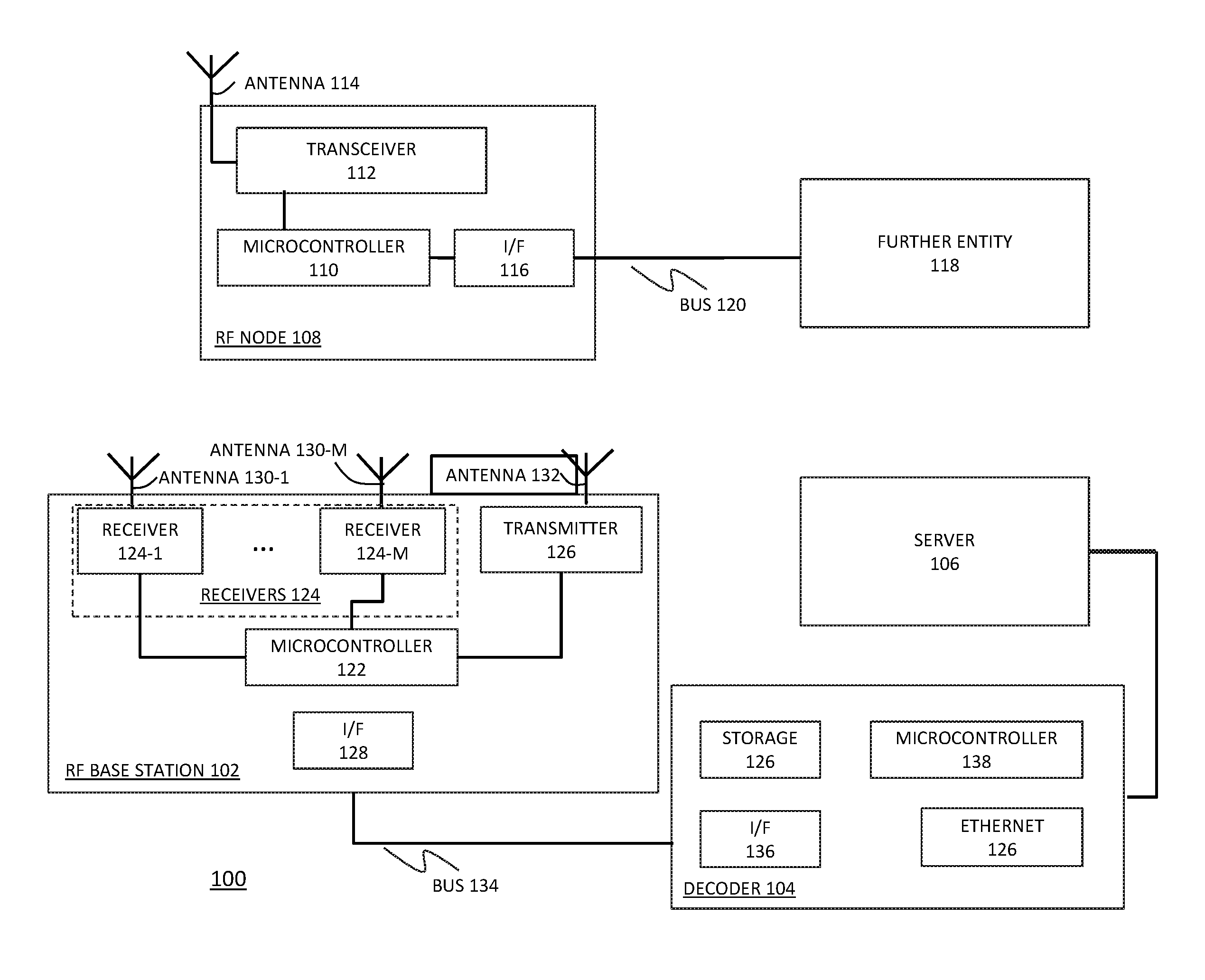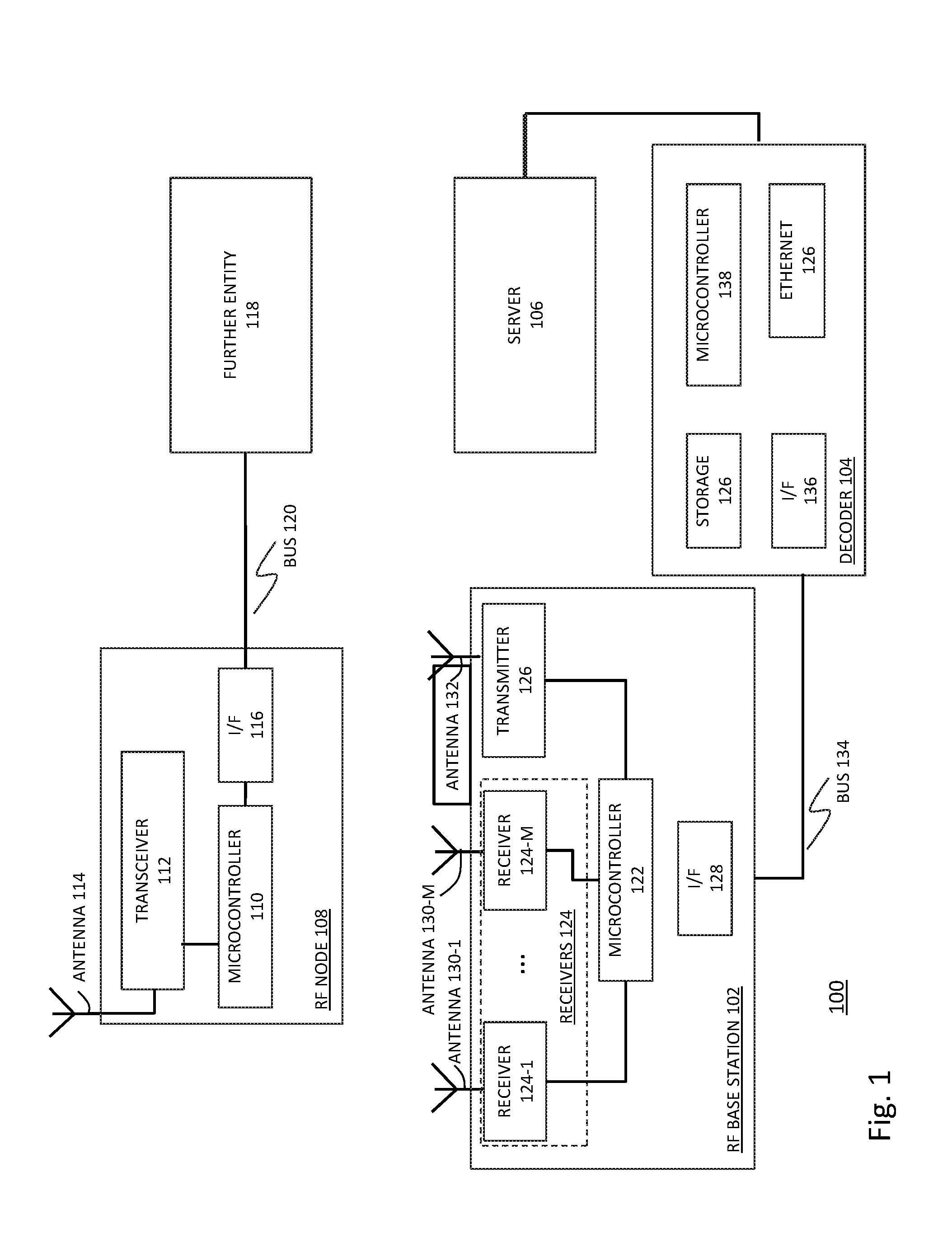Fast radio frequency communication for sport timing applications
a radio frequency communication and sport timing technology, applied in the field of radio frequency communication protocol, can solve the problems of short range often becoming problematic, exacerbated problem, and not providing fast set-up of rf link
- Summary
- Abstract
- Description
- Claims
- Application Information
AI Technical Summary
Benefits of technology
Problems solved by technology
Method used
Image
Examples
Embodiment Construction
[0051]FIG. 1 provides a schematic illustration of an RF communication system 100 according to one embodiment of the present invention. The system 100 comprises an RF base station 102 connected to a decoder 104 and a server 106, and at least one, but typically a plurality, of RF nodes 108 (in order to not obscure the drawing, only one RF node 108 is illustrated in FIG. 1). As described herein, the system 100 is capable of managing RF communication between the base station 102 and the plurality of nodes 108 implementing frequency hopping, using e.g. FHSS scheme, over M substantially non-overlapping frequency channels, the channels e.g. being within the publicly available 2.4 GHz ISM band.
[0052]Each one of the nodes 108 in the system 100 may be identified by a unique node identifier. Each one of the nodes 108 could comprise or be included within e.g. a transponder used on racing vehicles.
[0053]Each one of the nodes 108 comprises a microcontroller 110. The microcontroller 110 is a data ...
PUM
 Login to View More
Login to View More Abstract
Description
Claims
Application Information
 Login to View More
Login to View More - R&D
- Intellectual Property
- Life Sciences
- Materials
- Tech Scout
- Unparalleled Data Quality
- Higher Quality Content
- 60% Fewer Hallucinations
Browse by: Latest US Patents, China's latest patents, Technical Efficacy Thesaurus, Application Domain, Technology Topic, Popular Technical Reports.
© 2025 PatSnap. All rights reserved.Legal|Privacy policy|Modern Slavery Act Transparency Statement|Sitemap|About US| Contact US: help@patsnap.com



